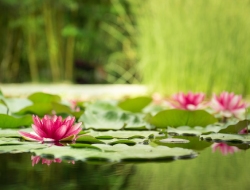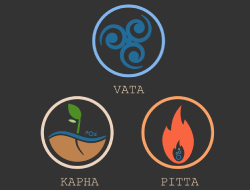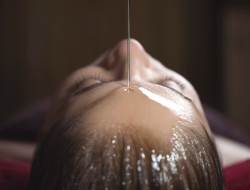Complete Beginner’s Guide to the Neti Pot – A Natural Nasal Irrigation Device
What exactly is a Neti Pot?
The Neti Pot, a small pot with a spout, is the cornerstone of nasal irrigation, and provides a simple and effective way to perform a saline nasal rinse.
Used over thousands of years by yogis throughout India as one of their practices to enhance pranayama and meditation, this somewhat unglamorous technique has proven to be a key modern-day treatment for many ENT conditions such as sinusitis.
How Do I Use a Neti Pot?
The main goal of performing a saline nasal rinse is to loosen and dissolve excess mucus, hence reducing nasal congestion. Pollution, dust, pollen and other irritants and allergens are gently rinsed away in a matter of minutes.
Preparing the neti pot is simple:
- Fill the neti pot with boiled water (boiled for 3 -5 minutes)
- Add around ½ teaspoon of unrefined salt and stir to dissolve it.
- Let the solution cool off until it is luke warm (not hot or cold).
Performing the rinse:
- Stand bending forward over a sink, and tilt your head to the left.
- Seal the right nostril with the neti pot spout and breath gently through your mouth.
- The saline solution will flow into the right nostril and out the left. Adjust your chin tilt so the water flows smoothly.
- As the mucus dissolves you can stop and gently blow your nose to clear it. After using about 200ml on the right nostril, repeat for the left nostril.
- Clean your nose afterward by gently blowing each nostril alternately several times.
You can use the Neti Pot daily, or seasonally, depending on the severity of your condition.
Extra Tip – If you experience any kind of water clogging in the nasal passage, you can do a steam session with boiled water or use nasal drops. For further information on the use and benefits of Ayurvedic nasal drops see p249 of YATAN Yoga – A Natural Guide to Health and Harmony.
The Benefits of Nasal Irrigation
Regular saline nasal irrigation using a neti pot improves nasal ciliary function and normalizes the nasal environment, hence is highly beneficial for people with sinusitis and other health problems which originate in the mucus lining of the sinuses. Because of this, many ENT Doctors around the world recommend nasal irrigation for patients who have gone through a sinus operation.
With continued use many additional benefits can result:
- Sense of smell improved.
- Improved clarity of hearing and eyesight.
- The face starts to glow after a month of use.
- Enables the individual to think more clearly.
- Better quality of sleep.
- Improved quality of life.
Using a Neti Pot can provide relief to people who are suffering from ailments like:
- Sinusitis
- Common Cold
- Flu/ Nasal Congestion
- Hayfever
- Nasal dryness due to low humidity and air-conditioned environments
The Types of Neti Pots
There are primarily 4 types of Neti Pots available in the market today, and really it is a matter of personal preference which type suits your lifestyle best.
Plastic Neti Pot – If you want a budget neti pot, plastic ones are generally the cheapest. The good part is it is unlikely to break and is lightweight too when compared to ceramic neti pots. You ideally need to check it is BPA free and a food grade plastic, because boiling water can cause chemicals to leach from the plastic. It also needs to be washed and dried thoroughly to avoid mold developing, and with regular use the plastic may degrade so will need to be replaced yearly.
Ceramic Neti Pot – You will find quite a variety of designs and colours with ceramic neti pots, with some being handmade. The downside with this kind of neti pot is that they can break easily, so extra care is needed if travelling with them or using in a tiled bathroom. They tend to be small and may need to be filled a couple times to rinse both nasal passages completely. These are also expensive, so it is guaranteed that you will feel bad when and if it breaks… !
Stainless Steel Neti Pot – The stainless steel neti pot is one of the most durable of all the neti pots available in the market. You can easily wash it in your dishwasher. Although stainless steel does not rust that easily, using saline water regularly means good maintenance is essential – the neti pot should be thoroughly rinsed and dried after each use.
Copper Neti Pot – A copper neti pot ages beautifully with time if it is handled with care. However, there are not many options available online when it comes to copper neti pots. The main downside of this type is, that it can turn green over time when exposed to saline solution.
Type | Dishwasher Safe | Rustproof | Breakable | Spout Tip Texture |
| Plastic | No | Yes | No | Soft |
| Ceramic | Varies | Yes | Yes | Hard |
| Stainless Steel | Yes | Yes | No | Hard, cold |
| Copper | Yes | Varies | No | Hard, cold |
We at Yatan Holistic Ayurvedic Centre sell Stainless Steel Neti Pots believing them to be the best type of Neti Pot out there for durability, easy maintenance and longevity.

*Discover holistic healing with a complimentary phone or video consultation from our expert Ayurvedic practitioner. Start your path to better health today!*























